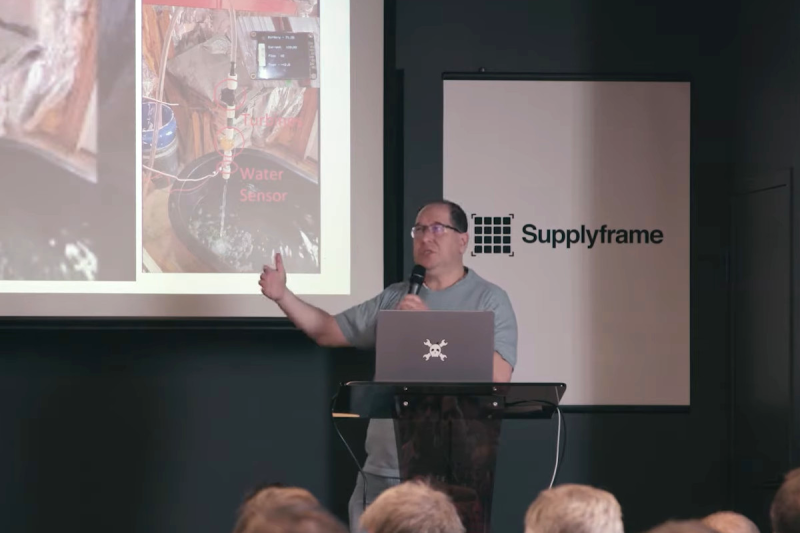[Irak Mayer] has been exploring IoT applications for use with remote monitoring of irrigation control systems. As you would expect, the biggest challenges for moving data from the middle of a field to the home or office are with connectivity and power. Obviously, the further away from urbanization you get, the sparser both these aspects become, and the greater the challenge.
[Irak] solves his connectivity problem by assuming there is some WiFi network within range, building a system around the Blues Wireless WiFi note card. Substituting their cellular card would be an option for applications out of WiFi range, but presumably without changing too much on the system and software side of things. Leveraging the Adafruit FeatherWing INA219, which is a bidirectional current sensor with an I2C interface, for both the power generation and system consumption measurements. For control, [Irak] is using an Adafruit ESP32 board, but says little more about the hardware. On the software side, [Irak] is using the Blues Wireless NoteHub for the initial connection, which then routes the collected data onto the Adafruit IoT platform for collation purposes. The final part of the hardware is a LiPo battery which is on standby to soak up any excess power available from the energy harvesting. This is monitored by an LC709203f battery fuel gauge.
The idea of the project is to explore how much energy can be harvested from the water flow, using turbines taking a little energy from the flow. It was quickly noted that when the system connects to the WiFi network there is a large spike in power usage, which quickly overwhelms the turbine under test, and the battery is needed to take up the slack until the power draw drops enough. Connecting more turbines in parallel (electrically) did as you would expect, and provided more power to the system. [Irak] discovered that it was perfectly feasible to simply run without a battery, as the turbines alone were sufficient to get the system up and running, sending out data. With no water flow, there was no data flow, which is also diagnostically useful.
In the final parts of the talk, [Irak] touches upon the use of solar panels and also wind turbines as options for providing power, which could all be used in conjunction to provide power when any one power source is not providing enough on its own. For example, solar panels produce little power on a cloudy day, but if the wind happens to be blowing instead, then that may be enough to keep the data flowing.
None of these concepts are new, but the combination of multiple off-grid power sources combined with easily accessible hardware and open source software certainly builds the groundwork for some powerful applications out there, in the field.
The range of applications for IoT technology is incalculable, but we’ve seen a few over the years. Like this IoT-connected water butt, and another one monitoring soil moisture levels, with a plan to expand to the larger scale.
















Hasn’t this basically been dealt with by LoRaWAN?
I didn’t watch the video because I assumed it would be LoraWAN (Lora32). It’s not? Hmmm, why not?
Better than LoRa or Wifi is NB-IOT. I have been trying to address the same problem here https://hackaday.io/project/187406-watchible. I have it now were its using an average of 2.3 mA.
I must be missing something. The article seems to say “[Irak] solves his connectivity problem by assuming [that it doesn’t exist because someone else has already solved the problem for him]”. Huh?